I love perennials. What’s not to love about them? They sleep all winter long below the soil and are low-maintenance during dormancy. When they sprout they explode out of the ground with fervor, and then they grow plenty of flowers to admire and smell.
Perennials are plants that disappear for half the year. Some grow above the soil when it is warm, and then below the soil while it is cool. Others grow during the winter and are dormant during the summertime. Their unique life cycle allows them to thrive in conditions that other plants would struggle in.
Because perennials disappear for months, they are incredibly hardy. They pop up year after year without fail after becoming established. Perennial plants survive extreme frost and heat by going underground when conditions extend outside of their preferred range.
The plants on this list inhabit a wide range of conditions, from full sun to full shade. Look to the care guides of each plant to determine which perennials will survive and thrive in your Pacific Northwest garden.
Western Bleeding Heart
This graceful Pacific Northwest native stuns onlookers each spring. Its dainty foliage and pendent heart-shaped flowers sprout from the soil when temperatures warm and the ground thaws. A slow, rhizomatous spreader, this plant covers shady areas with ease, and it reseeds readily.
The heart flowers range from bubblegum-pink to rose color, and they open in rows on arching stems. ‘Zestful’ is an ever-blooming variety with rose-red blooms.
Grow Dicentra from seeds, rhizomes, or transplants. Sow seed in early spring after a cold stratification period of two to three months. Transplant mature plants in spring as well. For rhizome propagation, dig up a chunk of the bulbous roots growing in the ground during fall or winter. Plant them in a shady, moist location.
Violet Teacup Flower
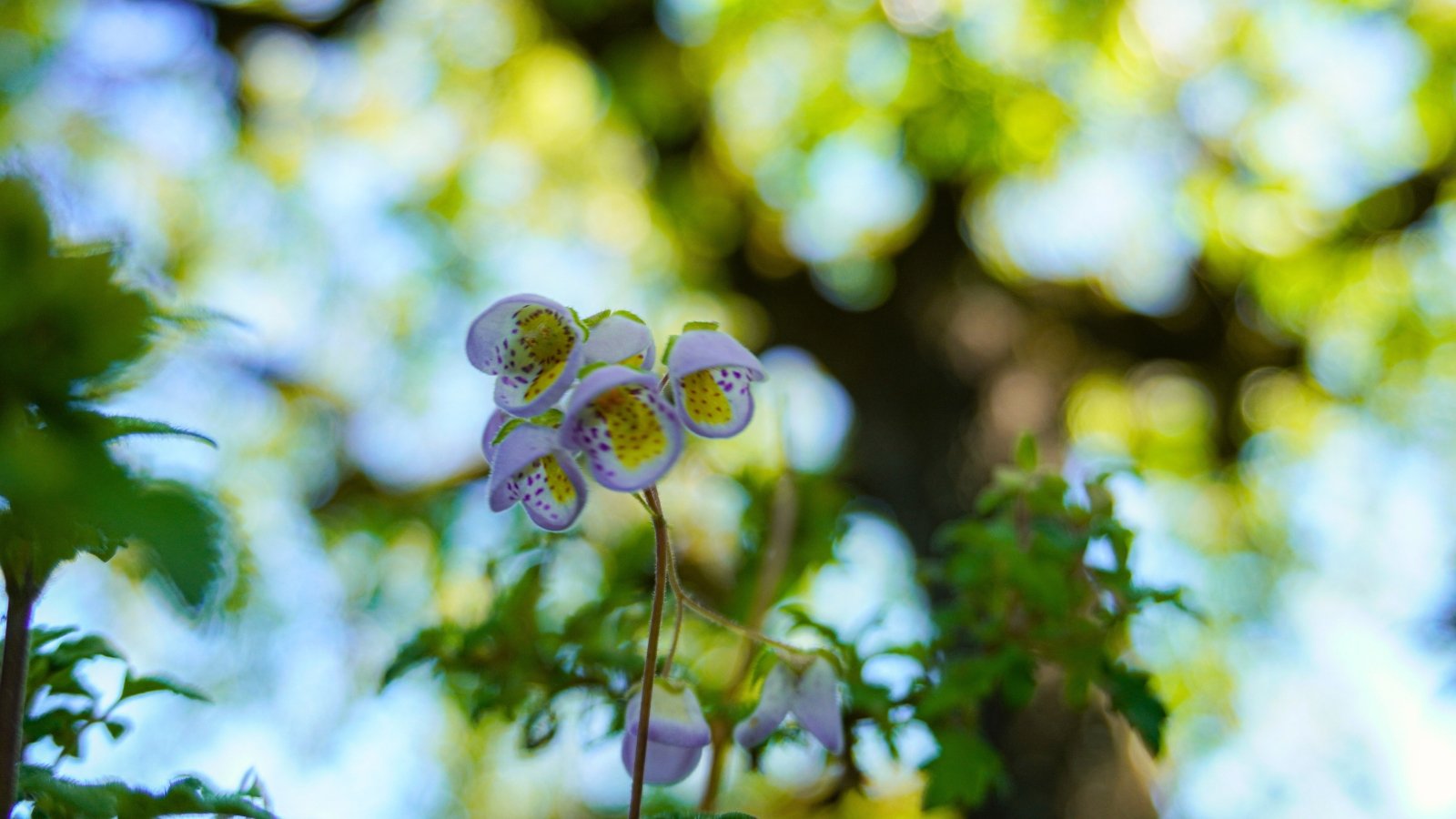
You’ll have to get low to the ground to truly admire this perennial beauty! Known as Jovellana violacea, the violet teacup flower grows tiny bell-shaped flowers with unique markings and colorations. In its native range of Chile, it can grow to five feet tall, but in the Pacific Northwest, it reaches heights of three feet.
This herbaceous perennial species behaves like hardy fuchsias. Winter cold and freeze kill the aboveground stems. Do not worry, though, as they sprout back up in spring. Then, after a period of growth in early summer, the yellow-spotted violet flowers grow.
Grow this plant easily from seed indoors. Plant seeds in pots in early spring and lightly cover them with soil. They need light to germinate, so keep the top layer thin. Water and keep the soil moist, and after a few weeks, your violet teacup flower seeds should germinate. Plant them in a location with dappled shade in the afternoon and fertile soil.
Hellebore
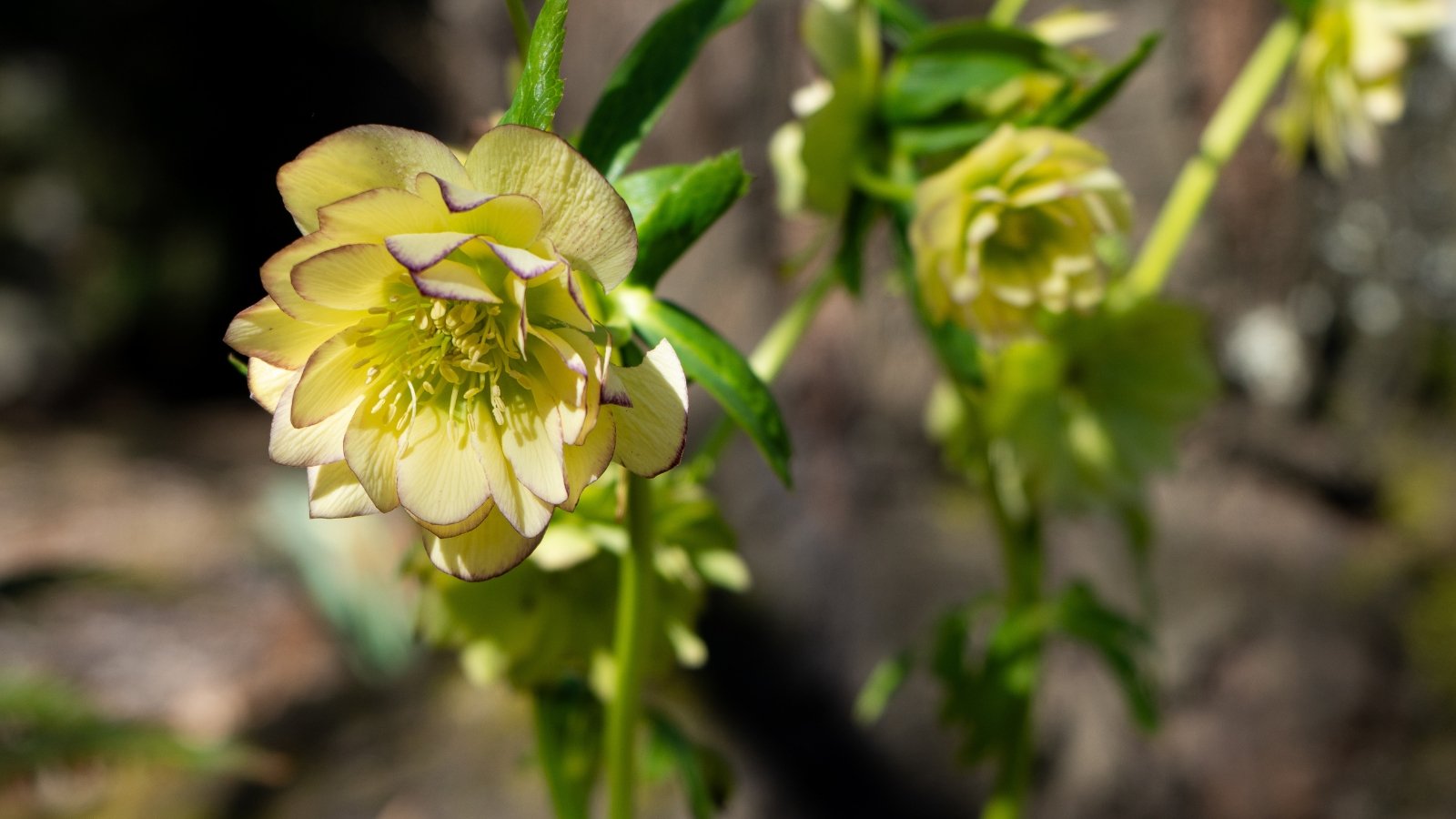
A winter flowering classic in Pacific Northwest gardens, hellebores are a jewel of all perennials. I’m a little partial to them as I live near two of the most famous hellebore breeders worldwide. Their Winter Jewels® series has variations of black, yellow, red, and cream flowers, and single and double-layered cultivars of each color.
Hellebores are not native to the Pacific Northwest despite their willingness to grow here, with species naturally growing from Greece to Japan. They perform spectacularly in woodland and shaded gardens from the coast eastward to the rocky mountains. Species naturally hybridize with each other and create baby plants from seed with new flowering patterns and growth habits.
To grow a specific variety of hellebores, choose a cultivar at a nursery near you. The flowers bloom in late winter, so check nurseries for cultivars in winter to early spring. Plant a hellebore in the shade with regular water in its first year, and during the second year, it will be drought tolerant.
Cyclamen
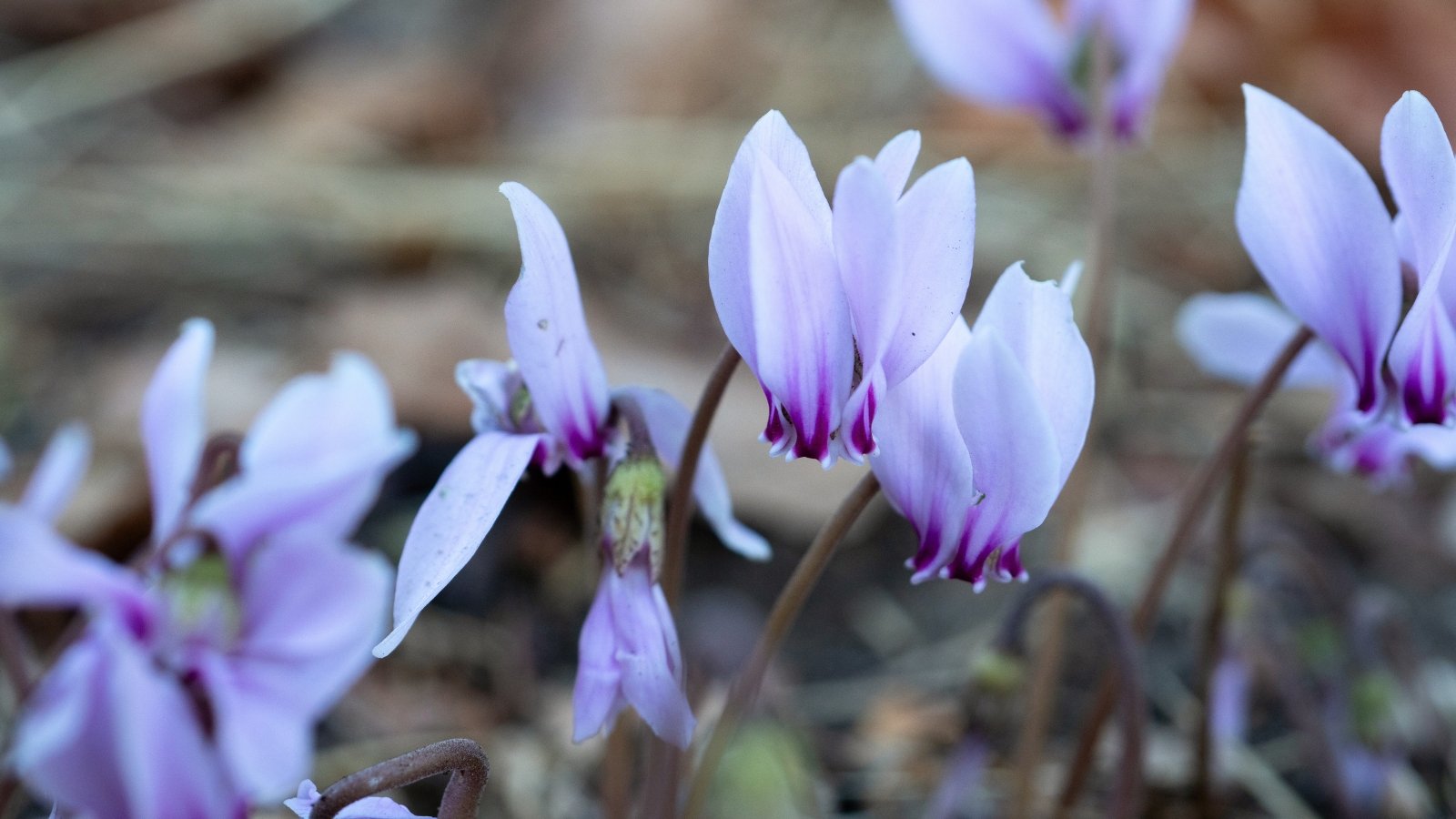
With multiple species thriving in warm and cool zones, cyclamens are wide-ranging perennials that hail from Europe and Asia. These cute little spreading plants grow from tubers, and they spread throughout the yard year by year.
Most cyclamens sold at nurseries are Cyclamen persica and will thrive outdoors in zones nine through eleven. Other species like C. hederifolium and C. coum are easier to grow in colder gardens that receive frost. Varieties have a range of flower colors like white, pink, and purple. Their foliage also has a wide range of variegated, deep green, and silver forms.
Grow cyclamens from seeds, tubers, or potted plants. Plant tubers in summer when dormant, and plant potted cyclamens whenever they are available at nurseries. Cyclamens grow readily from seed and they self-sow, so plant them in a setting like a woodland garden where they can spread on their own. Sow seeds in pots on the surface of the soil and keep them moist until they sprout.
Candytuft
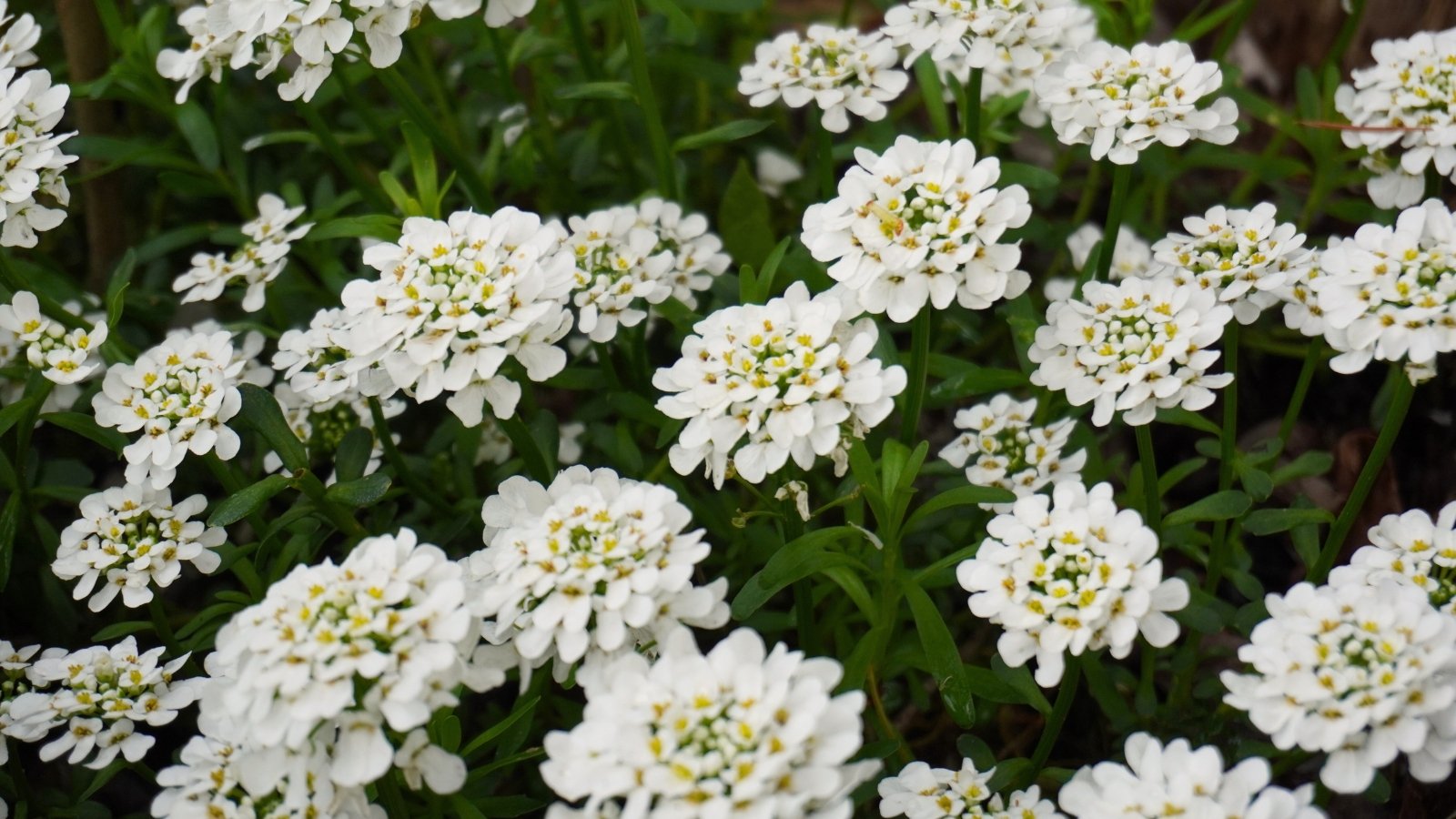
Long favored in Pacific Northwest gardens, candytuft is a highly aromatic and incredibly showy perennial from Europe. The flowers grow in little clusters and open at the edges first before the ones in the center. Plants are low maintenance and spread to a few feet wide, creating blankets of pure white blossoms.
‘Purity’ is a showy compact variety with slight pink in its blossoms. ‘Snowflake’ grows large clusters of flowers and enlarged leaves on short stems. For a fall twice blooming variety in fall and spring, look for ‘Autumn Snow’ or ‘Autumnale.’
Candytuft prefers well-drained soil and regular water during the growing season. After a year, they become established and tolerate short periods of drought. Plant transplants in fall in mild winter areas and in early spring where gardens experience frost.
Hosta
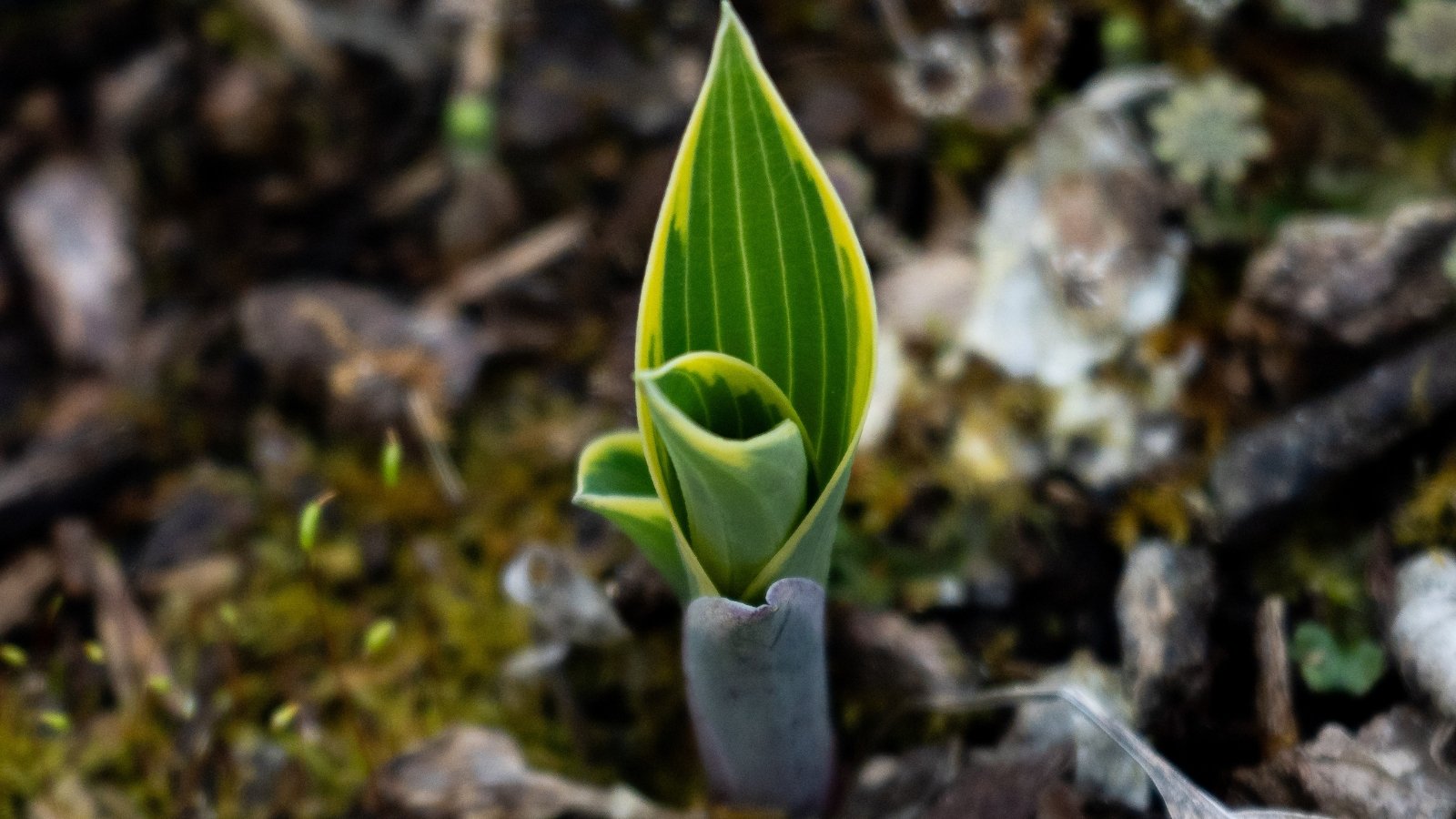
Adored for their strappy, varied foliage, hostas perform well year after year in shady gardens. They extend out of the ground in early spring, and their shoots develop into multiple heart-shaped leaves that overlap each other.
There is a huge variation of hosta varieties available. Small-leaved and compact ‘Blue Mouse Ears’ grows luxuriously blue and stays small. For a giant type with huge golden leaves, find ‘Sum and Substance.’ Other cultivars have blue, green, or yellow leaves, and some have variegation with multiple colors.
Plant hostas in fall or spring. Plants go completely dormant in winter and are low maintenance when they do grow—situate hostas in a shady spot with nutrient-rich soil or compost. Divide mature plants late during the dormant season by cutting off a chunk of the hosta and planting it elsewhere.
Hardy Impatiens
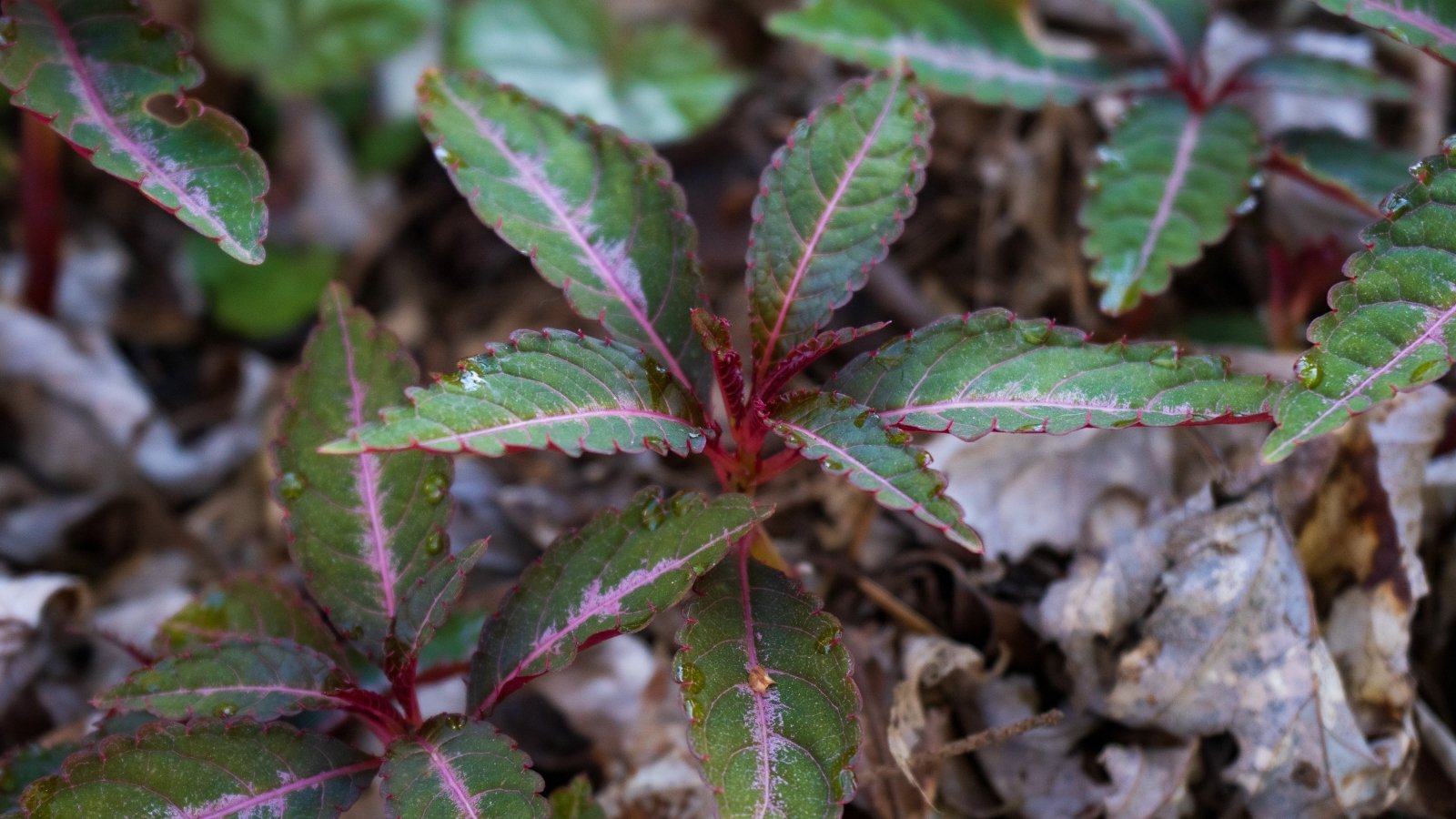
Typically you think of impatiens as annuals, but perennial impatiens do exist! A garden favorite with multiple strains, Impatiens omeiana sneaks out of the ground in early spring and puts on a show all year until winter. It creeps and sprouts multiple stems with handsome foliage extending in a rosette around them.
A worthy cultivar for many gardens is ‘Silver Pink.’ This type grows well in my garden under the shade of a cherry tree and camellia. Slowly it creeps into new spaces underground and fills in empty spaces.
To grow hardy impatiens, plant seeds or buy mature plants at your local nursery. Plant seeds in 5” pots and cover them with a thin layer of soil. Water them well under lights, and in a few weeks baby impatiens should sprout! Plant them in a shady locale in your yard.
Fringe Cups
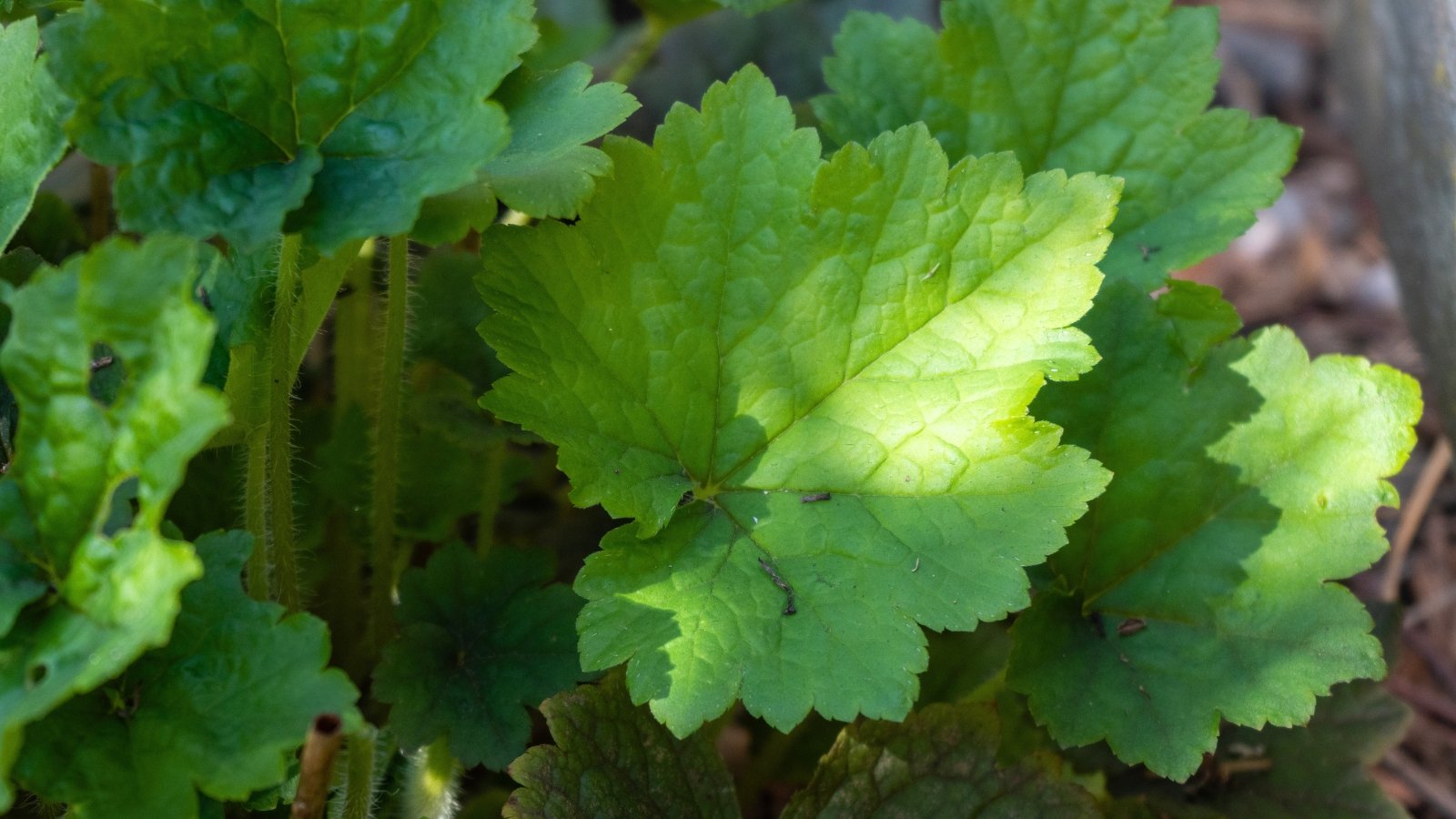
A tough native with delicate foliage, fringe cups are plants that shine in woodland settings. They closely resemble other species from the family Saxifragaceae, like Tiarella and Heuchera, but belong to the genus Tellima. They outshine the other two types with their simplicity and grace.
Fringe cups prefer conditions that are similar to ferns. Moist, shady, and packed with other plants, they thrive in gardens where other plants struggle. In spring, flower stalks shoot up with urn-shaped green flowers and tiny white petals. En masse, they make a gorgeous planting and work well with other shade-loving perennials.
Plant fringe cups from fall through spring, planting later in the spring in cold-winter zones. This plant readily reseeds itself, and you can easily sow seed yourself. Simply scatter Tellima seeds in fall or spring in a shady, wet area. They should germinate after a few days.
Bee Balm
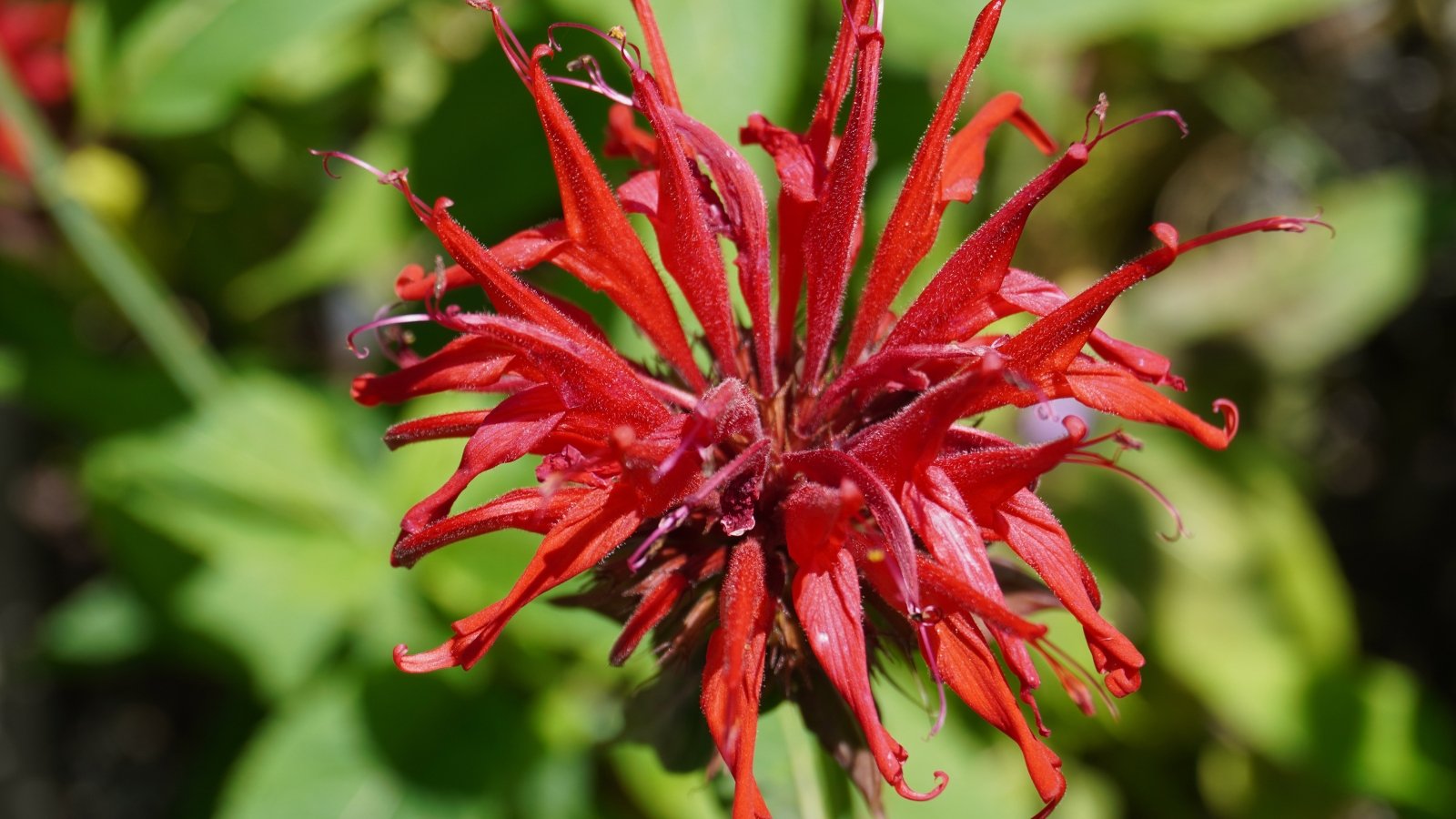
A true beauty, bee balm delights growers each year with gorgeous blooms that attract bees, hummingbirds, and pollinators. Not only is it beneficial for wildlife, but it is beneficial for humans too! This eastern North American native plant makes a delicious tea from both its flowers and leaves.
This perennial’s scientific name is Monarda didyma, and tons of cultivars come from this native species. For deep red and scarlet blooms on tall stalks, try ‘Jacob Kline.’ If you prefer light pink blossoms, try ‘Croftway Pink’ or ‘Granite Pink.’ For moist gardens, a newer violet variety that is mildew resistant is ‘Violet Queen.’
Plant Monarda from seed, rooted cuttings, or transplants. Seeds readily sprout in spring after the last frost date in your area. The easiest way to propagate is to take cuttings off of a mature plant and let them sit in a cup of water for a few weeks with light. After they root, plant them directly in the garden with full sun and moist soil.
False Sea Holly
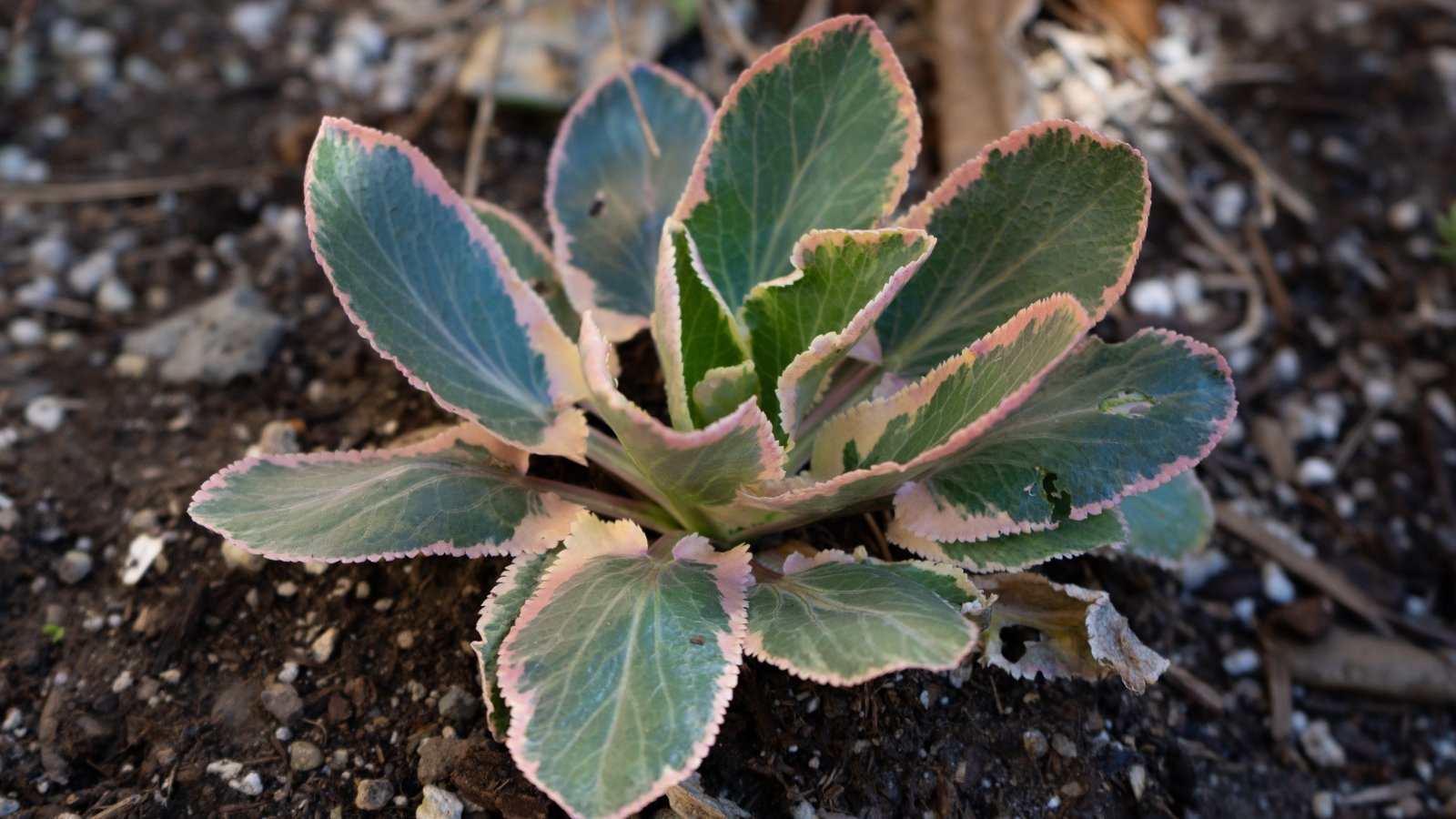
From coastal rocky regions hails the false sea holly, a drought-tolerant flowering perennial. There are lots of other plants in the Eryngium genus that have similar blooms and foliage, but false sea holly is one of the best for Pacific Northwest gardens. It grows 4-inch long leaves and big bursts of bright blue blooms. They have light blue bracts that make a fine architectural statement in your landscape.
Varieties with variegated foliage and big blooms are available at nurseries. ‘Steel Blue’ sprouts deep green leaves and bright blue blooms. ‘Jade Frost’ has pink, green, and white variegated leaves that change color with cool weather.
Eryngium species rapidly reseed in favorable conditions, and they are also easy to grow from seed. Surface sow seeds in pots and mist the tops to wet the soil. False sea holly seeds require light to germinate and do not need soil on top of them. To plant a specific variety in your garden, look to your local nursery in the early spring for unique cultivars.
Saxifrage
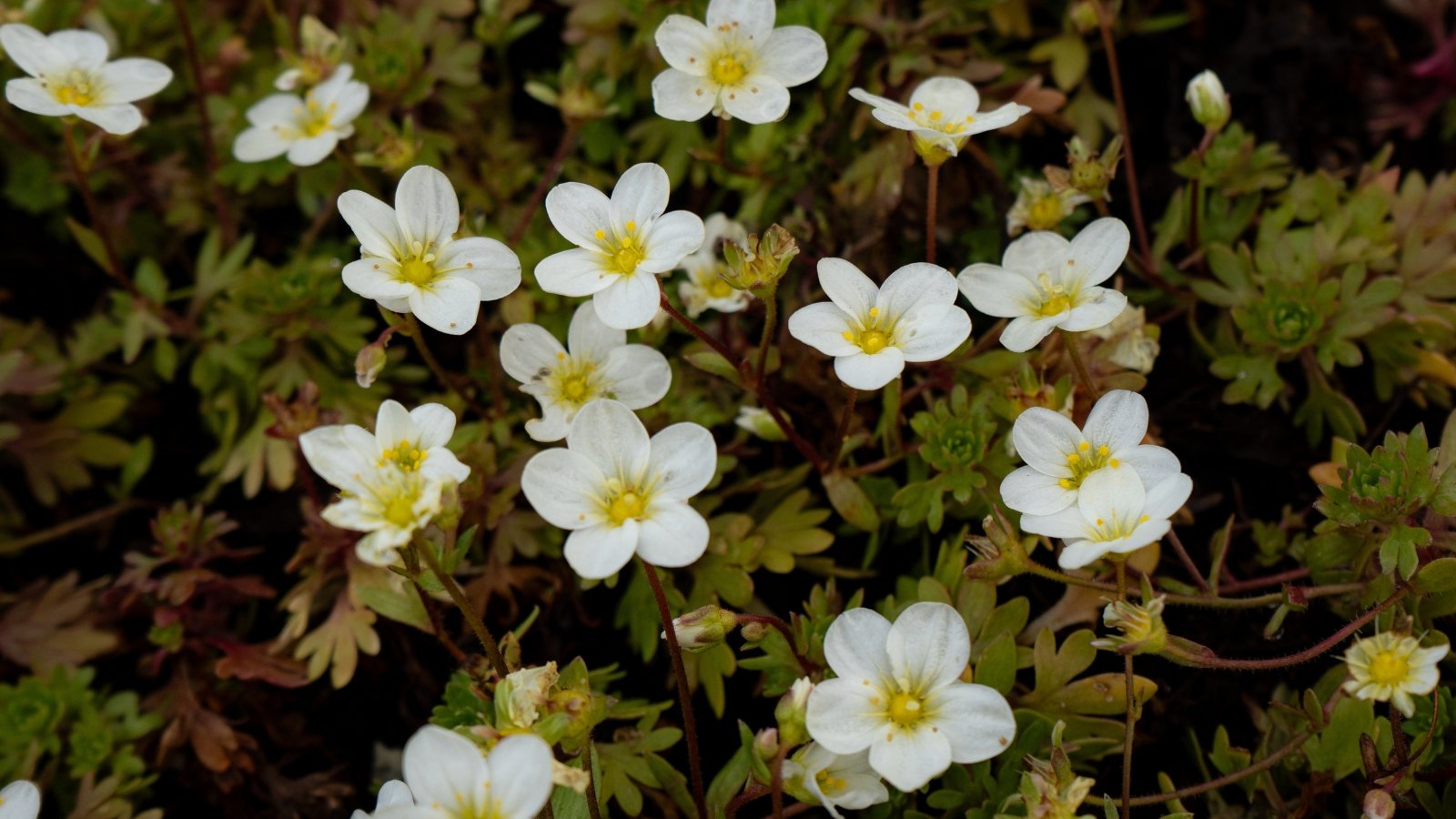
A gorgeous rock garden genus with many hybrids available, Saxifraga contains specimens native to the U.S. and Europe. Most are Full sun-loving plants that excel in areas with rocky soil, crevices, and moderate water. They form mats of green succulent-type foliage and bloom profusely in summer before going dormant.
Every saxifrage has slightly different care techniques; some are more demanding than others. Some Pacific Northwest native species to start with are Saxifraga oppositifolia, S. tolmiei, and S. mertensiana. They are native to high-elevation areas where water and Full sun are available, in crevices and rocks near streams. A fun non-native is Saxifraga x arendsii ‘Scenic White’ with finely divided leaves and bright white flowers.
These perennials often go dormant during the summer when water is low and temperatures soar. Plant saxifrage plants with good drainage, lots of sunlight, and regular water during the growing season. Different species prefer different conditions, so be sure to read the label of the type you have for the best care instructions.
Purple Coneflower
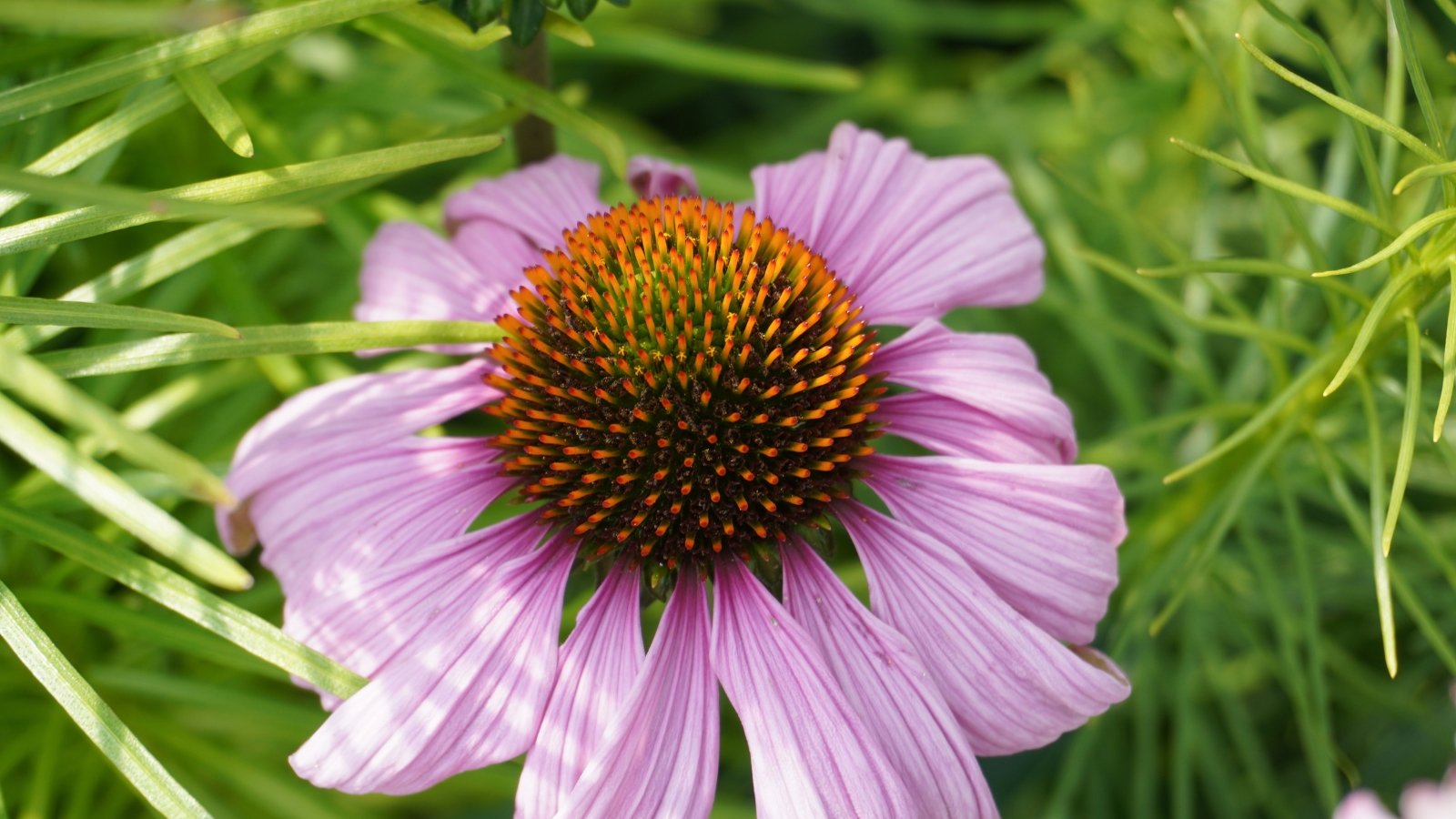
This Midwest prairie native has found a new home in the Pacific Northwest. Although coneflower is not from here, it performs spectacularly in the summer, and it draws lots of bees and pollinators into gardens. Big spiky cones extend out of foliage clumps that resemble black-eyed Susan leaves. Breeders have created funky varieties with green, yellow, white, purple, and red blooms.
A subtle surprise is Echinacea ‘Green Twister’ with green and pink tinted flower petals. White blooming variety ‘White Swan’ looks spectacular in mass plantings. A fun variety is ‘Magnus’ with huge 7-inch wide blooms. All coneflowers create seeds that finches love to eat, so be sure to keep faded blooms on plants and they’ll develop into seeds.
Plant Echinacea from seeds or transplants. Sow seeds in early spring. Keep the soil well-watered, and they should sprout in a few days. Mature plants are also dividable. Dig up a mature plant in the early spring and cut it into pieces, making sure each chunk has a bud and roots. Plant new chunks in full sun and keep them moist until they establish themselves.
Purple Rock Cress
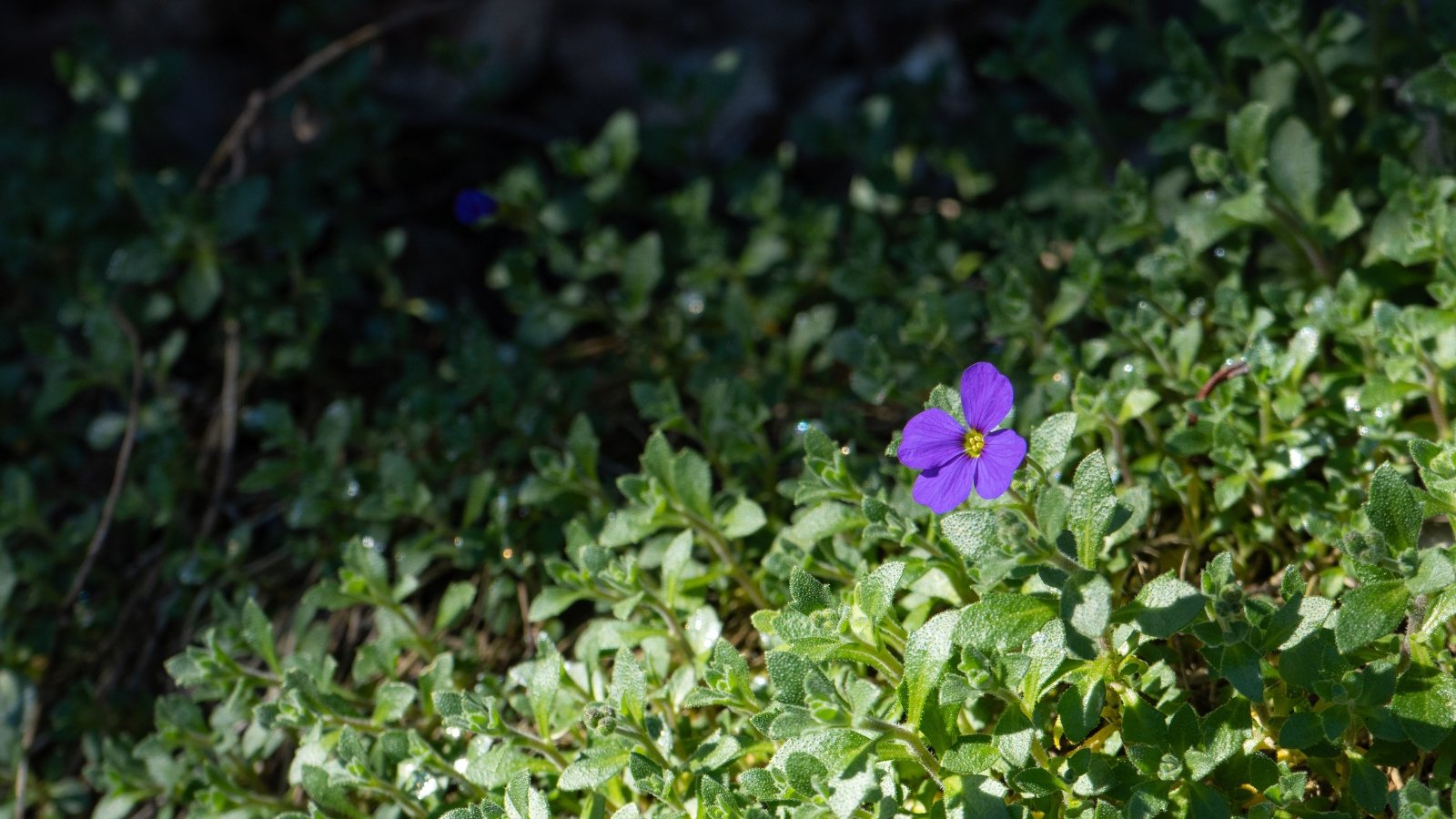
Multiple plants go by the common name rock cress. Purple rock cress is Aubrieta deltoidea and it spreads to fill whatever space it resides in, forming a gorgeous mat of foliage and thin purple flowers. Perfect for rock gardens alongside saxifrage perennials, this ground cover also grows well inside chinks in walls.
The species type is a fine specimen plant, although hybrids and varieties do exist for the adventurous gardener. Try ‘Rokey’s Purple’ for dark purple flowers and ‘Novalis Blue’ for blueish-tinted blooms.
Purple rock cress appreciates good drainage, moderate water, and gritty soil. Grow plants from seeds or cuttings. Plant seeds in early spring and keep the soil moist until they sprout. Take cuttings off of a healthy plant during summer, and root them in water or soil.
Final Thoughts
Perennials outperform other garden plants with their annual eagerness. They slowly spread year by year on their own, and create fabulous landscape arrangements with low maintenance. Work less and enjoy more flowers by planting perennials in your garden this season.
From unique spreaders like hardy impatiens to tough reliables like hellebores, perennials function in many different conditions. After a few years of growth they’ll grow into adult plants you can split them up and give them to your friends. Plant a Pacific Northwest perennial today and enjoy bountiful ornamental beauty for decades to come!





